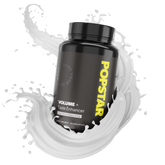A strong and well‑coordinated pelvic floor is essential for men’s bladder control, sexual function, and core stability. Understanding how male pelvic floor exercises work can help men prevent or improve common issues like erectile dysfunction, premature ejaculation, and urinary leakage.
Table of Contents
- What Are Male Pelvic Floor Exercises?
- Key Takeaways
- Quick Facts
- Why Pelvic Floor Health Matters for Men
- How Male Pelvic Floor Exercises Work
- Benefits of Pelvic Floor Training for Men
- Risks and Common Mistakes
- How to Strengthen the Pelvic Floor Safely
- Male Pelvic Floor Exercises and Sexual Health
- Pelvic Floor Training for Men With Existing Conditions
- When to Seek Professional Help
- Frequently Asked Questions
- References and Further Reading
- Disclaimer
What Are Male Pelvic Floor Exercises?
Male pelvic floor exercises, often called pelvic floor exercises for men or male Kegel exercises, are controlled contractions of the pelvic floor muscles. These muscles support the bladder, prostate, bowel, and sexual functions. Strengthening them can improve urinary control, reduce sexual performance concerns, and enhance overall pelvic stability.
Key Takeaways
- Male pelvic floor exercises involve tightening and relaxing muscles that control urination and support erections.
- Pelvic floor strengthening for men can help reduce symptoms of erectile dysfunction.
- Many men use pelvic floor exercises for premature ejaculation management.
- Strong pelvic muscles support better bladder and bowel control.
- Consistency is more important than intensity for long‑term benefits.
- Over‑tightening can lead to pelvic tension or discomfort.
- Pelvic floor training for men is safe when performed gently and regularly.
- Men of all ages can benefit from pelvic floor health.
- Improvements typically appear within a few weeks to a few months.
Quick Facts
| Category | Summary |
|---|---|
| Also Known As | Kegel exercises for men, pelvic floor muscle exercises (male) |
| Primary Purpose | Improve bladder control, sexual function, pelvic stability |
| Key Muscles | Bulbocavernosus, ischiocavernosus, levator ani |
| Suitable For | Most men, including those with ED or urinary leakage |
| Avoid If | Severe pelvic pain or unclear diagnosis (consult a doctor) |
Why Pelvic Floor Health Matters for Men
A healthy pelvic floor is essential for controlling urination, supporting erections, maintaining core stability, and preventing pressure‑related issues like hernias. Weakness in these muscles can develop from aging, surgery, inactivity, or excessive tension.
How Male Pelvic Floor Exercises Work
Pelvic floor exercises for men strengthen specific muscles responsible for lifting and supporting pelvic organs. The motions resemble the act of stopping urination midstream. Regular repetition helps retrain coordination, tone, and endurance.
Benefits of Pelvic Floor Training for Men
Improved Bladder Control
Strengthening these muscles helps reduce leakage and urgency.
Better Erectile Function
A stronger pelvic floor supports blood flow and rigidity, improving erectile response.
Enhanced Ejaculatory Control
Pelvic floor exercises for premature ejaculation help men regulate muscular contractions.
Core Stability
The pelvic muscles contribute to posture and lower‑back support.
Risks and Common Mistakes
- Over‑tightening muscles without relaxation
- Incorrect muscle activation
- Holding breath during contraction
- Relying solely on exercises without medical evaluation when symptoms persist
How to Strengthen the Pelvic Floor Safely
- Identify the correct muscles by noticing what stops urine flow.
- Gently tighten and lift for a few seconds, then relax.
- Practice sets of slow and fast contractions.
- Avoid doing exercises during urination regularly to prevent dysfunction.
Did you know? Many men improve results by integrating breathwork and posture awareness.
Male Pelvic Floor Exercises and Sexual Health
Pelvic floor exercises for erectile dysfunction help support blood flow and increase rigidity. For premature ejaculation, training enhances muscular control to slow down excessive tension during arousal.
Pelvic Floor Training for Men With Existing Conditions
Men with prostate surgery, chronic pelvic pain, or neurological conditions may need tailored guidance. A pelvic floor physical therapist can provide individualized routines.
When to Seek Professional Help
- Pain during contractions
- Persistent urinary leakage
- Worsening sexual function
- Difficulty locating the correct muscles
Frequently Asked Questions
What are pelvic floor exercises for men?
They are muscle‑tightening exercises designed to strengthen the pelvic floor. These muscles control urination and support sexual function.
Are male Kegel exercises safe?
Yes, when performed gently. Overworking the muscles can cause tension or discomfort.
Can pelvic floor exercises improve erections?
Many men report improvement because the pelvic muscles support erectile rigidity.
Do these exercises help premature ejaculation?
Strengthening these muscles can improve control and reduce involuntary contractions.
How long does it take to see results?
Most men notice changes in 4–12 weeks.
Can exercises help after prostate surgery?
They can support recovery but should be guided by a clinician.
How often should men practice these exercises?
Typically 1–3 times per day in small sets.
Can pelvic floor tension cause problems?
Yes, overly tight muscles may contribute to pain or sexual dysfunction.
How do I know if I’m doing them correctly?
The contraction should feel like lifting from inside the pelvis. A therapist can confirm.
Can pelvic floor exercises replace ED medication?
Sometimes they help reduce reliance, but they are not a guaranteed replacement.
Are the exercises noticeable to others?
No, they can be done discreetly.
Is age a factor in pelvic floor strength?
Aging can weaken muscles, but exercises are effective at most ages.
Should I stop urinating mid‑flow to practice?
Do it only once to identify the muscles, not as a routine.
Can breathing affect pelvic floor performance?
Yes, coordinated breathing improves effectiveness.
Are pelvic floor apps for men useful?
Some men find them helpful for reminders and tracking.
References and Further Reading
- Major urology association resources on pelvic health
- National health service guidance on Kegel exercises
- Pelvic floor physical therapy organizations
- Reputable men’s health medical centers
- Peer‑reviewed research on pelvic floor training and sexual health
Disclaimer
This article is for informational and educational purposes only and does not constitute medical or mental health advice. It is not a substitute for speaking with a qualified healthcare provider, licensed therapist, or other professional who can consider your individual situation.




















































